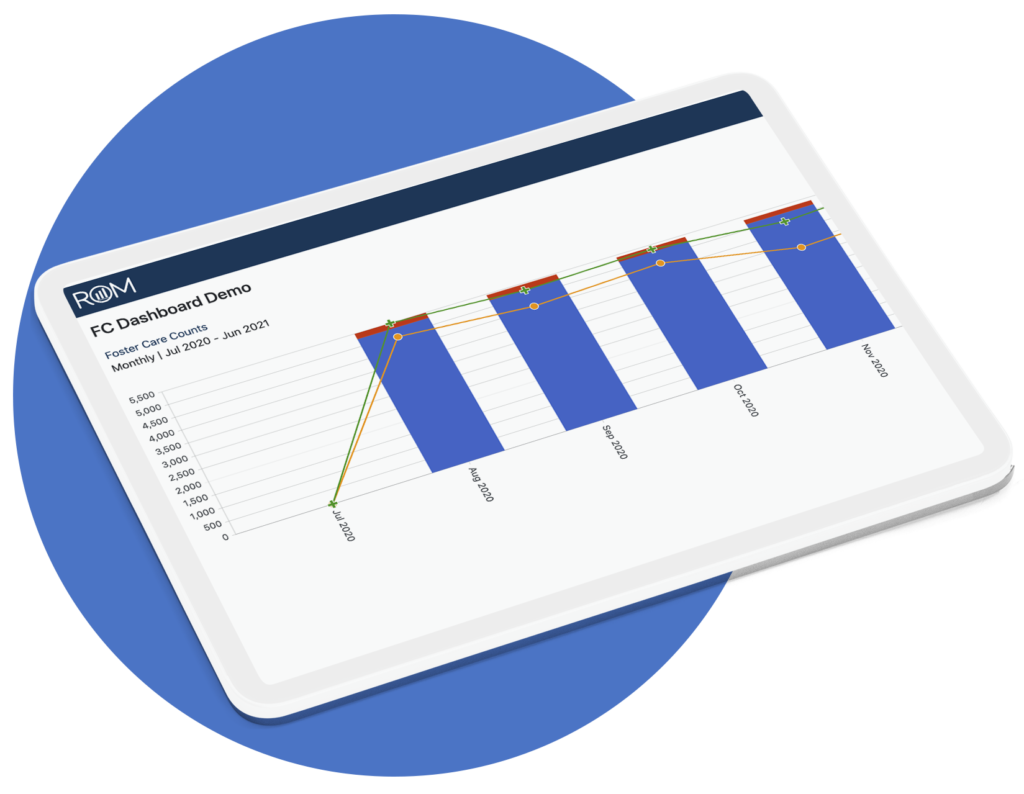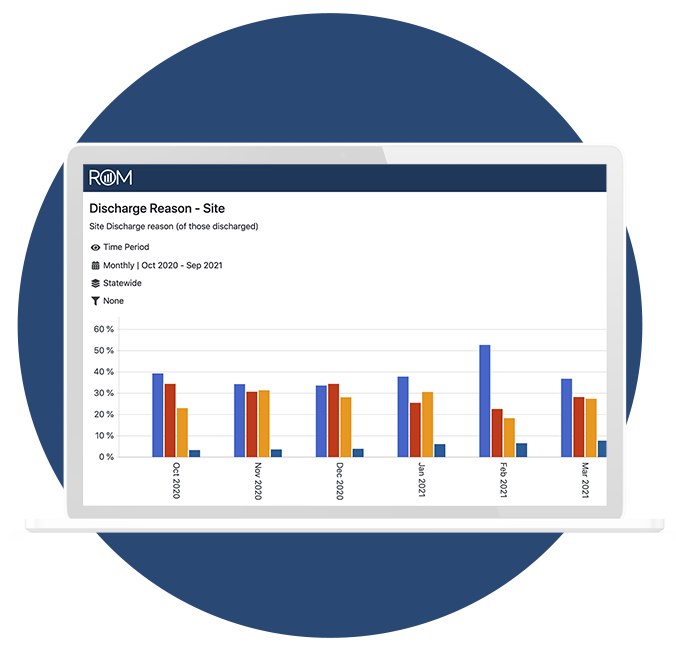Connecticut Case Study
How Connecticut Used ROM’s Flexibility
To Improve Services For Children & Families
The Problem
The Connecticut Department of Children and Families has been under the order of a court-supervised consent decree since 1991. In addition to federal reporting requirements, the consent decree created a need for a child welfare reporting system.
Unfortunately, the internal reporting system in place was the opposite of functional and user-friendly. There were a few data aggregations available, and no ability to create visual data like charts or graphs.
Many reports produced were plagued with errors. Agency staff didn’t trust the data reported and were frustrated by having to interpret columns of figures to get the information they needed.


The Solution
Connecticut established its partnership with ROM in 2004. The DCF needed access to reliable data that showed a history of case performance in a timely way. It also needed to compare data across different offices around the state. There was also the pressure of quickly implementing brand new outcome measures required by the consent decree.
Less than a year after beginning the partnership, the agency went live with the adoption of ROM’s core technology model. About a third of the outcome measures required for the consent decree were in place when the ROM system came online.
A year later, ROM became the official source for consent decree outcome plan measures, fully replacing the previous internal system.
The DCF team was impressed by the adjustable interface with the ability to change components such as labels, glossary definitions, the legend, titles, and subtitles of reports, and more–down to color bars and lines. Filters and crosstab data elements were available and adjustable for fully customized reporting, a function that wasn’t possible in the previous system.
The Outcome
Two decades later, DCF will soon exit its consent decree in part because of the ROM system, which is now completely integrated into the way DCF serves children and families in Connecticut.
Federal reporting requirements are met with ease. Agency transparency has increased because ROM makes data accessible to the public. The team has also started using ROM to address broader goals around issues related to racial disparity and disproportionality in child welfare. ROM meets all of their outcome reporting requirements.
The flexibility of the ROM system helps the DCF team build customized reports in seconds. Because of ROM’s functionality and customization, data can be cut in a multitude of configurations, down to granular detail such as caseworker, unit, or family.
DCF meets regularly with the ROM team to make updates and add additional functions. Staff are pleased with the variety of available aggregations and use the system regularly for accountability and goal measurement.
ROM Services Provided
- Federal Reporting
- Data Validation & Analysis
- Database Hosting
- Longitudinal Reporting
- Reporting Interface

